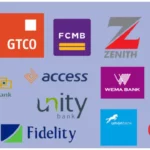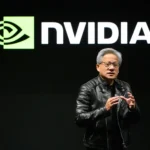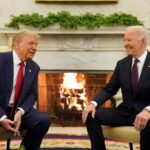The U.S. semiconductor industry has spent the first half of 2025 navigating turbulence, transformation, and tectonic shifts. From boardroom shakeups to international tensions and multi-billion-dollar deals, the race for AI dominance has placed America’s chipmakers squarely at the center of global power dynamics.
Semiconductors now sit at the heart of everything—from national security and geopolitics to the AI arms race. And as TechMarge’s reporting shows, the first six months of 2025 have redefined the stakes.
June: Silicon Power Plays and Strategic Shakeups
Intel’s Leadership Reset – June 18
Intel announced four new top-tier appointments as part of its broader push to return to its engineering-first DNA. Alongside a new Chief Revenue Officer, high-profile engineering veterans joined the fold under CEO Lip-Bu Tan’s restructuring strategy.
Massive Layoffs at Intel Foundry – June 17
Intel confirmed it would cut 15–20% of its Foundry workforce in July. The move follows Tan’s plan to flatten management and refocus the company on core strengths. Layoff rumors first surfaced in April.
Nvidia Exits China Forecasting – June 13
Nvidia CEO Jensen Huang announced the company will stop projecting revenue from China. This follows licensing restrictions on its H20 AI chips, leading to significant financial hits and signaling no easing of U.S.-China chip tension.
AMD Acquires Untether AI Team – June 6
AMD pulled off a strategic acqui-hire, bringing in the core team from Untether AI, a company specializing in AI inference chips. The move bolsters AMD’s position in the hardware layer of AI infrastructure.
Brium Joins AMD’s Growing AI Stack – June 4
Continuing its AI push, AMD acquired software optimization startup Brium, which helps developers adapt AI workloads to non-Nvidia hardware. This hints at AMD’s ambition to challenge Nvidia’s tight hold on AI hardware compatibility.
May: Sanctions, Acquisitions, and Policy U-Turns
Nvidia’s $8 Billion Blow – May 28
Nvidia disclosed that the new U.S. export restrictions on its H20 AI chip led to a staggering $4.5 billion in Q1 losses, with an anticipated $8 billion revenue hit projected for Q2.
AMD Buys Enosemi – May 28
AMD’s first major acquisition of the year was Enosemi, a startup in the silicon photonics space. As chipmakers explore light-based data transmission, Enosemi’s tech could be a future game-changer.
U.S.-China Tech War Escalates – May 21
After the U.S. warned companies against using Huawei’s AI chips “anywhere in the world,” China’s Commerce Ministry threatened legal action against enforcement efforts—escalating the semiconductor standoff.
Intel Prepares to Offload Non-Core Units – May 20
Sources confirmed Intel is actively seeking buyers for its networking and edge computing units—once responsible for $5.4 billion in 2024 revenue. The move is part of Tan’s restructuring vision.
Biden’s AI Chip Diffusion Rule Dies – May 13
The controversial AI Diffusion export rule was formally rescinded by the Department of Commerce days before enforcement. The DOC promised new guidance, but enforcement of Huawei chip bans remains intact.
Trump Admin Pulls Plug on AI Restrictions – May 7
In a surprise twist, the incoming Trump administration quietly shelved Biden’s proposed AI export framework. New regulations are now being drafted under the Trump team’s own strategy.
April: Policy Clashes and Boardroom Maneuvers
Anthropic Champions Chip Restrictions – April 30
AI startup Anthropic called for tougher chip export restrictions. Nvidia shot back, mocking claims that Chinese firms smuggle AI chips via “baby bumps” or “lobsters,” calling instead for U.S. innovation to lead the way.
Intel Plans 21,000 Layoffs – April 22
Intel signaled major headcount cuts during its earnings call, affecting over 21,000 roles. CEO Tan insisted the layoffs are necessary to streamline decision-making and put engineering back at the forefront.
Nvidia’s H20 Takes Another Hit – April 15
Nvidia revealed new export licensing requirements for its H20 chip, resulting in $5.5 billion in charges. Intel and TSMC also reported similar financial hits, showing the cross-industry impact.
Huang’s Mar-a-Lago Visit Raises Eyebrows – April 9
Nvidia CEO Jensen Huang reportedly dined at Mar-a-Lago amid speculation he brokered a deal to shield H20 chips from further export bans—possibly in exchange for increased U.S. investment in AI data centers.
Intel–TSMC Joint Venture Rumored – April 3
Reports emerged of a potential Intel–TSMC joint venture, giving TSMC a 20% stake in a new chipmaking entity. While unconfirmed, the deal could represent the next frontier in collaborative fabrication.
Intel Reboots With New Focus – April 1
CEO Lip-Bu Tan kicked off Intel’s turnaround with two big moves: spinning off non-core business units and launching custom chip initiatives. The shift is aimed at revitalizing Intel’s product competitiveness.
March: A New Era Begins
Intel Taps Lip-Bu Tan as CEO – March 12
Intel brought back veteran board member Lip-Bu Tan as CEO. His appointment marked the beginning of Intel’s shift toward an engineering-centric, innovation-led future.
February: Setbacks and Political Pressure
Intel’s Ohio Fab Delayed Again – February 28
Intel confirmed that its $28 billion Ohio chip facility, originally scheduled to open this year, will now be delayed until at least 2030. The project marks one of the largest U.S. chip infrastructure investments ever.
Bipartisan Pressure on AI Chip Controls – February 3
Senators Elizabeth Warren and Josh Hawley urged tighter AI chip export restrictions, specifically referencing Nvidia’s H20 chips. Their bipartisan letter emphasized the national security risks of unrestricted exports.
January: Shockwaves from China and a Biden Final Act
DeepSeek Releases Open “Reasoning” Model – January 27
Chinese startup DeepSeek disrupted the AI world by releasing its R1 open-source reasoning model. The release sparked alarm in Silicon Valley over China’s rapid AI progress—and triggered calls for tighter chip control.
Biden’s Last-Minute Export Order – January 13
With just days left in office, President Biden issued a sweeping executive order to tier U.S. AI chip exports by country. The rule introduced tough new limits but was eventually shelved by the incoming administration.
Anthropic Backs Biden’s Chip Rules – January 6
Anthropic CEO Dario Amodei co-authored an op-ed supporting Biden’s chip export controls. He argued they were key to keeping China’s AI development in check—and called for even stricter enforcement under Trump.
What It All Means for the Future of Chips
From leadership shakeups at Intel to regulatory backflips in Washington, 2025 has already reshaped the landscape for U.S. semiconductor companies. The industry sits at the volatile crossroads of AI progress, global politics, and supply chain transformation.
And while AMD and Nvidia race to dominate AI infrastructure, Intel is betting on reinvention. Meanwhile, global tensions with China continue to drive policy decisions that ripple through revenue forecasts and R&D roadmaps alike.
One thing is clear: 2025 is not just another chapter in chip history—it’s the prologue to a new era in American tech supremacy.


















